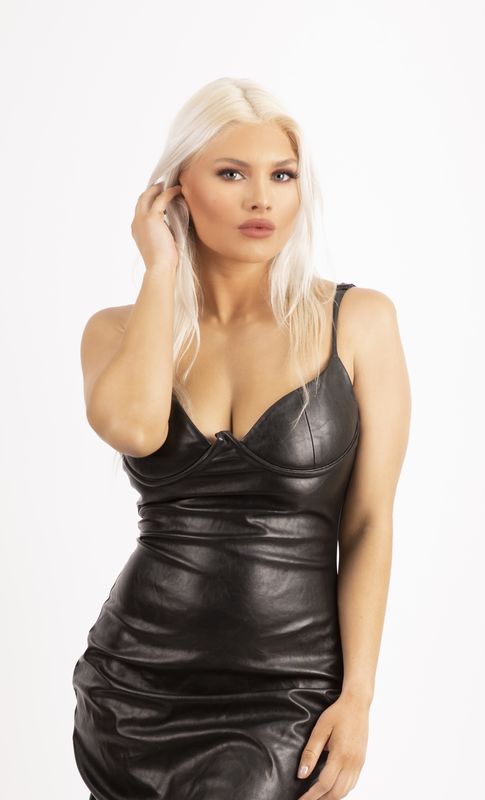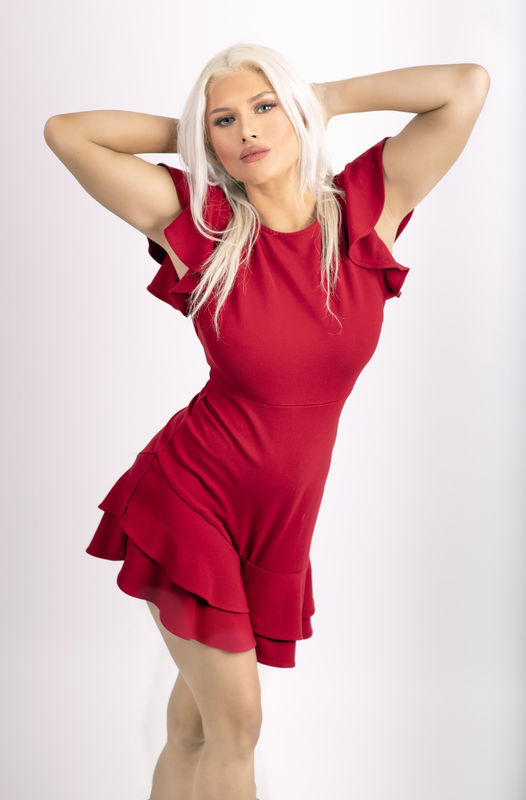Sekonic Light meter driving me nuts!
Jun 14, 2020 08:55:11 #
I have three Profoto strobes and have no problem triggering them and taking readings with my Sekonic L-758DR. I simply change the mode from Ambient Light - Flash Trigger and it just works.. but what I can't figure out is why I can't change the Modes from Shutter Priority - Aperture Priority in any flash setting on the meter. I should be able to dial up a desired f stop to control depth of field and press the trigger button and have the meter tell me which shutter speed to use but it doesn't! I can only use the default Shutter Priority measurement. Is this a limitation on the 758?
Jun 14, 2020 13:14:44 #
Sdubois wrote:
I have three Profoto strobes and have no problem t... (show quote)
Ummmm think about this for a minute. With speed lighting, shutter speed controls the ambient background not the flash exposure.
And Flash shutter speed is limited by your max sync speed. The limit is usually about 1/200 or 1/250.
If you want to set the Fstop For DOF, then you have to dial flash power up or down to change the exposure.
Jun 14, 2020 13:22:52 #
If you want to learn about flash lighting then go to this web site and read the material under lighting 101.
Jun 14, 2020 14:51:47 #
JD750 wrote:
If you want to learn about flash lighting then go to this web site and read the material under lighting 101.
Oops the link didn’t appear. Here it is.
https://strobist.blogspot.com/2006/03/lighting-101.html
Jun 14, 2020 21:09:29 #
Think of it this way- When you meter is set for electronic flash readings it automatically assumes that the FLASH is the principle and only light source and except for synchronization limitations, the shutter speed, as far as the meter is concerned, is the flash duration- whatever it might be. It "thinks" the camera shutter speed is irrelevant. The only time the actual camera shutter speed impacts the exposure is if you drag the shutter (use a slow enough shutter speed) to admit some or all of the ambient light.
So, if you want to select an aperture for selective focus (minimal depth of field) or to incorporate more depth of field in any particular shot when the flash is you among light source is to either adjust the flash output up or down to accommodate your requirements or adjust the IOS setting.
For this reason, when I recommend flash equipment for studio use, especially portraiture, I usually opt for units that have a very vast and adjustable power range. If you should want to provide selective focus, bokeh, etc., it is just as important to be able to power down your flash system to enable wider apertures as it is to boost the power when more depth of field is needed. The same goes for being able to establish a wide variety of lighting ratios in multiple flash setups or daylight to flash fill ratios when working with flash out of doors.
I use several meters, most of which are older models. Perhaps some of the newer issues can calculate both daylight and flash simultaneously or somehow correlate the separate readings and therefore enable an aperture priority function? I just take separate readings and do my own calculations.
My main point is that when the flash is the principle, dominant, or sole light source the sensor only "sees" the flash at its duration and reads accordingly and only supplies an aperture setting for the power output (quantity of light), at the distance between the flash unit and the subject (or the metering sensor in an incident light reading) as per the ISO setting. Your variation controls are distance, power output settings, attenuating the light with diffusion material, using neutral density filters on the camera, or the lights or employing bounce techniques or utilizing light modifiers. The camera shutter speed kicks into the equation when you eliminate or admit ambient light.
In certain thyristor and TTL controlled flash systems, the flash duration can be anything for 1/300sec to 1/10,000 sec or less but the meter doesn't care, it is just interested in light quality.
The exception to the rules is in some High-Speed (HSS) Flash systems that are designed to synchronize flash with focal-plane shutter beyond their usual maximum synch speed, the actual camera shutter speed will influence exposure. In this case, the flash tube glows much like a continuous light source.
So, if you want to select an aperture for selective focus (minimal depth of field) or to incorporate more depth of field in any particular shot when the flash is you among light source is to either adjust the flash output up or down to accommodate your requirements or adjust the IOS setting.
For this reason, when I recommend flash equipment for studio use, especially portraiture, I usually opt for units that have a very vast and adjustable power range. If you should want to provide selective focus, bokeh, etc., it is just as important to be able to power down your flash system to enable wider apertures as it is to boost the power when more depth of field is needed. The same goes for being able to establish a wide variety of lighting ratios in multiple flash setups or daylight to flash fill ratios when working with flash out of doors.
I use several meters, most of which are older models. Perhaps some of the newer issues can calculate both daylight and flash simultaneously or somehow correlate the separate readings and therefore enable an aperture priority function? I just take separate readings and do my own calculations.
My main point is that when the flash is the principle, dominant, or sole light source the sensor only "sees" the flash at its duration and reads accordingly and only supplies an aperture setting for the power output (quantity of light), at the distance between the flash unit and the subject (or the metering sensor in an incident light reading) as per the ISO setting. Your variation controls are distance, power output settings, attenuating the light with diffusion material, using neutral density filters on the camera, or the lights or employing bounce techniques or utilizing light modifiers. The camera shutter speed kicks into the equation when you eliminate or admit ambient light.
In certain thyristor and TTL controlled flash systems, the flash duration can be anything for 1/300sec to 1/10,000 sec or less but the meter doesn't care, it is just interested in light quality.
The exception to the rules is in some High-Speed (HSS) Flash systems that are designed to synchronize flash with focal-plane shutter beyond their usual maximum synch speed, the actual camera shutter speed will influence exposure. In this case, the flash tube glows much like a continuous light source.
Jun 15, 2020 13:05:00 #
JD750 wrote:
If you want to learn about flash lighting then go to this web site and read the material under lighting 101.
Thanks! I could use it although my photos seem to come out pretty well. But It's probably more trial and error at the moment.
Model Anne Sherlock


Jun 15, 2020 13:26:06 #
E.L.. Shapiro wrote:
Think of it this way- When you meter is set for el... (show quote)
Thank you for the excellent and instructive response EL,
Yes I have experience the shutter appearing in the image when I set the shutter speed too fast.
I am thinking I may need to employ filters to get the effect I want when I cannot adjust down in low light circumstances like when I am shooting with a black background for example.
My flash duration on the D1 AIR 500 is 1/1000 sec at lowest setting and faster at the highest. The other two strobes are Profoto Compact 600's (I bought all in like new condition and for a song ) and they are not as fast, 1/850 sec. I understand now that I am limited to just adjusting the light source, ISO and too a lesser degree the shutter speed to control DOF. My camera trigger is not a problem, it's capable of wire like speeds at 1/2500 sec.
Studio photography is a lot of fun but certainly a steep learning curve and very expensive as a hobby.
-Steve
Jun 25, 2020 16:26:47 #
As usual, you have a great response from EL.
I use the same meter. OUTSIDE it will show you the percentage of flash to ambient. Generally, around 40% flash is the most pleasant and natural-looking. The cool thing is adjusting the shutter duration to darken or lighten the background in relation to the flash. There is a limit, of course, as I cannot go shorter than 1/250 without exceeded the sync speed. For some studio strobes, even 1/250 is a touch fast and I go to 1/200.
In the studio, shutter speed is virtually of no consequence as long as it is short enough to kill any ambient.
Nice work.
I use the same meter. OUTSIDE it will show you the percentage of flash to ambient. Generally, around 40% flash is the most pleasant and natural-looking. The cool thing is adjusting the shutter duration to darken or lighten the background in relation to the flash. There is a limit, of course, as I cannot go shorter than 1/250 without exceeded the sync speed. For some studio strobes, even 1/250 is a touch fast and I go to 1/200.
In the studio, shutter speed is virtually of no consequence as long as it is short enough to kill any ambient.
Nice work.
Jul 8, 2020 15:07:01 #
CaptainC wrote:
As usual, you have a great response from EL. br I... (show quote)
YES! I was shocked when I viewed a model shoot with 1/250 and there was a dark bar on the right. I stepped down to 1/125 and had no problem. If I were rich I would buy a faster strobe setup and have the ability to shoot motion images like colored powder etc.
If you want to reply, then register here. Registration is free and your account is created instantly, so you can post right away.



